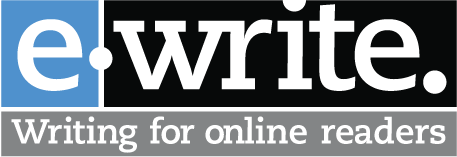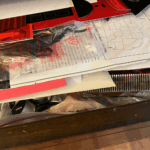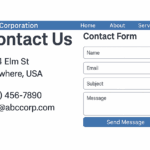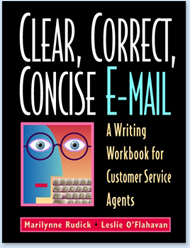[This article was originally published by WordRake.]
“How hungry is my reader?” When we sit down to write a web page, report, proposal, or blog post, we’re often plagued by uncertainty about our readers’ appetite for our content. Am I writing for a headline-only grazer? An executive summary diner? A footnotes-and-all chowhound? One size cannot fit all because readers differ in their appetite for detail. What’s a writer to do?
Try the Bite, Snack, Meal approach. Give your readers a meaningful, digestible message in three different sizes: a heading (the Bite), a brief summary or abstract (the Snack), and a long version (the Meal). No, expressing the same idea three different ways isn’t redundant; it’s accommodating. For some readers, an informative heading is all they need. Other readers want to read more, lots more. When you write a Bite, Snack, and Meal, you meet the needs of different readers, and you satisfy readers who thought they wanted just a little taste but discovered they want to read a lot.
Bite, Snack, Meal in Action
The National Institutes of Health publishes Research Matters, a weekly update of NIH research highlights reviewed by NIH’s experts. These folks are masterful Bite, Snack, Meal writers. Here’s an example:
- Bite: Earlier smoking cessation may improve lung cancer survival. If you read this heading and nothing more, you’ll get the message.
- Snack: Lung cancer patients who quit smoking before diagnosis had significantly better survival rates than smokers—and the longer without smoking, the better the odds of survival. This short summary provides more detail about the population studied and the research findings.
- Meal: Clicking the Bite takes you to the Meal. At 441 words, this Meal offers lots of satisfying detail for more interested readers. It explains the size and length of the study (5,500 patients enrolled between 1992 and 2022), the findings (former smokers had a 26% higher death rate and current smokers a 68% higher death rate than patients who had never smoked), and it links to the JAMA article where the original research was published.
But Bite, Snack, Meal isn’t just for newsletters or research summaries. Use this approach for everything from social media posts to landing page content. That’s how the Peace Corps built its What Volunteers Do page. They start with a message heading: Agriculture: Strengthen Food Security (the Bite). They follow with a brief, detailed, two-paragraph Snack:
Volunteers partner with farmers on techniques that prevent soil erosion, reduce the use of harmful pesticides, and replenish the soil. They work alongside farmers on integrated projects that often combine vegetable gardening, livestock management, agroforestry, and nutrition education.
After the Snack, the Peace Corp offers access to a Meal-amount of detail by linking to Agriculture videos, photos, and volunteer openings.
Bite, Snack, Meal is a plain language approach
If you’re a plain language editor or advocate, you’ve probably had a difficult negotiation session or two with subject matter experts who want to publish their jargon-loaded, message-burying, citation-crammed content and who push back at your suggestion that a simpler, more accessible version will meet the needs of a range of interested readers. It’s exhausting. The Bite, Snack, Meal approach offers a compromise. If we consider the written-by-experts-for-experts version the Meal, our job becomes creating—or helping the SMEs create—a Bite and a Snack that all interested readers can understand. Let the SMEs keep the Meal as-is. Free yourself from the pressure to edit it. Bend your talents to a Bite and a Snack, and publish that un-plain Meal three clicks deeper in the site.
The history of this worthwhile metaphor
I invented the Bite, Snack, Meal back in 1996 when the web was new-ish. (I understand this fact makes me seem five years older than dirt itself.) People were struggling with the print-to-web transition. They hadn’t fully grasped how search engines could drop readers on a site’s interior pages and not usher them first to the home page. Writers didn’t have much practice with providing content for readers who, by following hyperlinks, would create the order and depth of information they read by clicking links. I used the Bite, Snack, Meal approach to explain why readers want message headings and why they’d appreciate a summary as they were preparing to click through to more detailed content.
Sharing an understanding of what readers need
Bite, Snack, Meal isn’t a novel concept. Many kinds of writing have a title, short summary, and full version. Since forever, reports have had executive summaries, scholarly articles have had abstracts, and news articles have had leads. But Bite, Snack, Meal is a great metaphor. Good business metaphors work because both things being compared are illuminated by the comparison. “Time is money” reminds us that intangible time is as valuable as countable money. Bite, Snack, Meal works because “hunger” is a useful way of thinking about readers’ need for information, a need that varies by person, situation, and topic. A caring cook feeds people what they like and need. A competent writer feeds readers content in the size and level of detail they prefer.
Metaphors help people with different kinds of experience share an understanding. For decades, Bite, Snack, Meal has helped me, a writing teacher, explain to activists, actuaries, and geoscientists alike why readers need a couple of short versions in addition to the long version. I hope it will be useful for you, too!








0 Comments